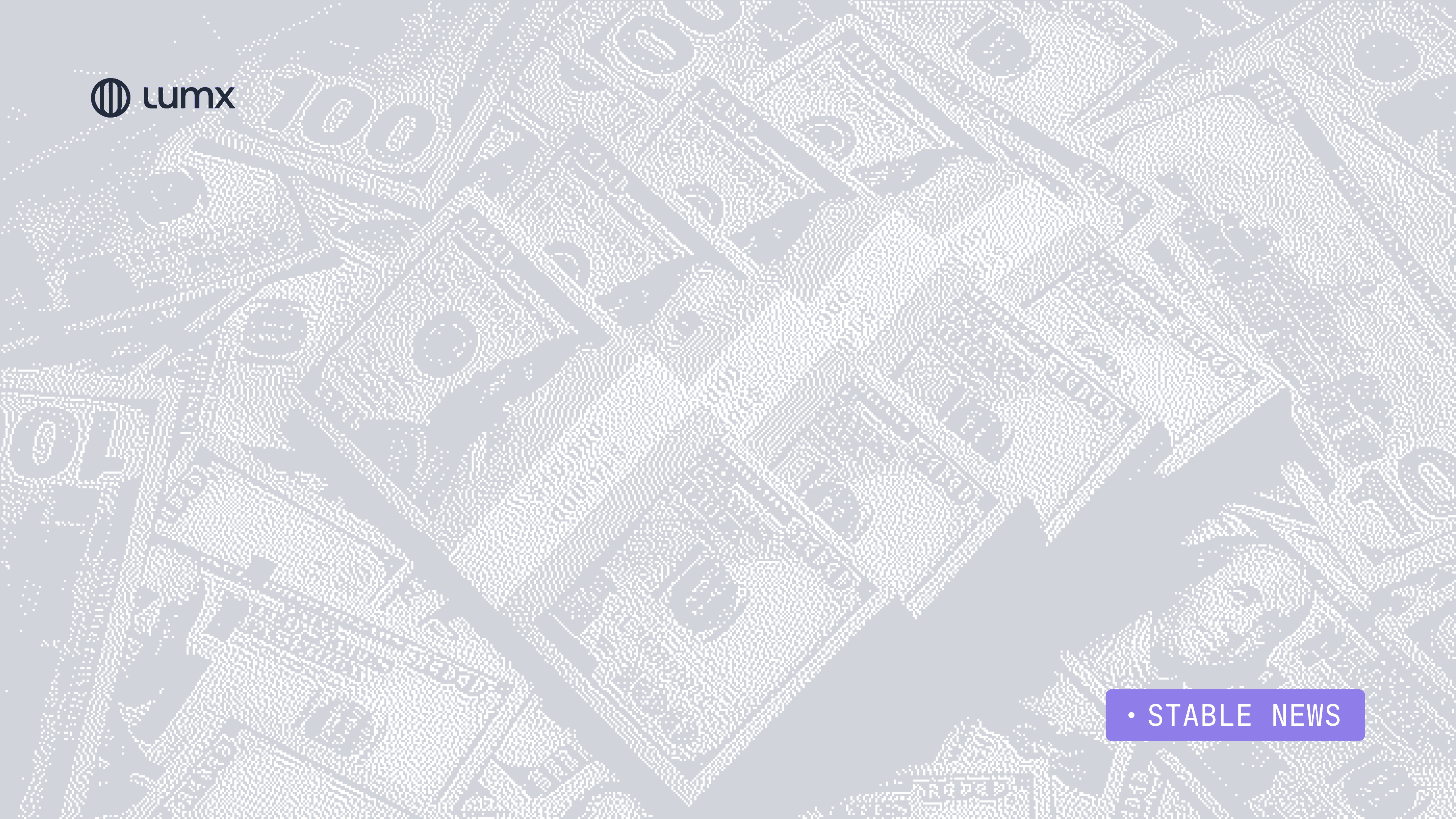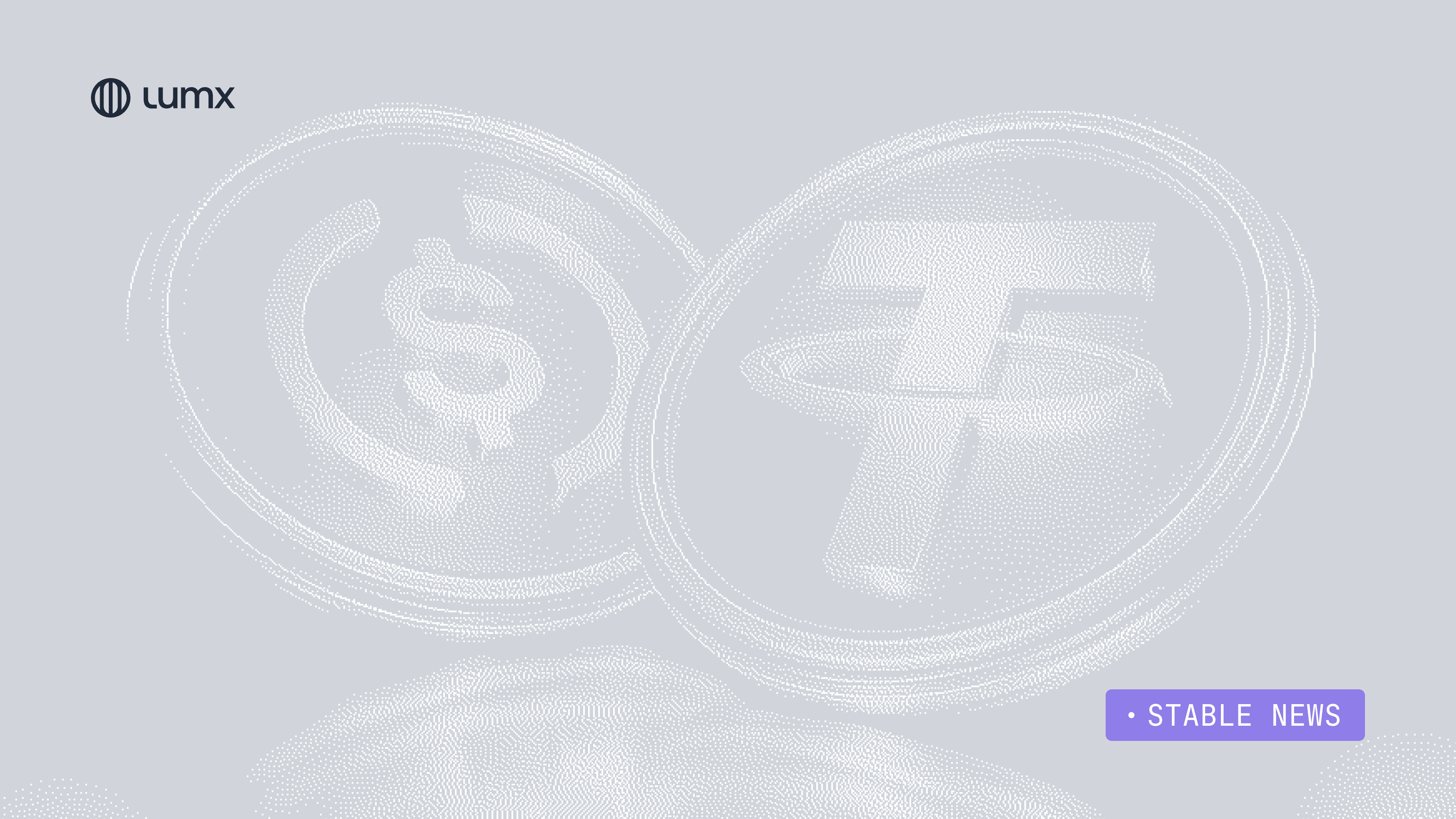Stable News is Lumx’s weekly curation, produced by Brazil and Latin America’s leading company in blockchain technology and digital payment infrastructure. It focuses on updates about stablecoins, tokenization, and regulatory trends shaping the financial system. In this edition, we highlight the strategic moves of JPMorgan, PayPal, Hong Kong authorities, and the European Union, illustrating how stablecoins are consolidating as an essential tool for competitiveness, efficiency, and global financial integration.
Reading time: 6 minutes
JPMorgan and Wall Street to Use Stablecoins as Core Infrastructure by 2025
JPMorgan is signaling the definitive integration of stablecoins into the traditional financial system. Recent reports project that tokenized assets and stablecoins have moved beyond parallel experiments to become part of day-to-day operations, serving as institutional collateral and liquidity management tools, fueled by increasing regulatory clarity.
The shift includes tokenizing real money: Goldman Sachs, BNY Mellon, BlackRock, and Fidelity are joining multi-billion-dollar initiatives to issue digital versions of money-market funds, while banks are starting to convert digital shares into margin instruments. This scenario shows that “digital assets” extend far beyond cryptocurrencies, becoming reimagined traditional infrastructure, with liquidity, interoperability, and global efficiency enabled by blockchain.
Why it matters:
✅ Stablecoins could unlock up to $75 billion in institutional liquidity in the coming months, boosting the use of digital collateral.
✅ Competition between tokenized funds and institutional stablecoins is creating a new category of “regulated digital money.”
✅ The mainstreaming of tokenization strengthens the competitive edge of banks and asset managers who embraced these models early.
PayPal Expands Global Reach, Bringing Stablecoins and Crypto Payments to Retail
PayPal has taken a historic step, enabling more than 30 million U.S. merchants to accept over 100 cryptocurrencies—including stablecoins such as USDT, USDC, and PYUSD, with automatic settlement in USD or directly in PYUSD. Businesses of all sizes can now adopt crypto payments without exposure to currency volatility, with fees starting at 0.99%, far lower than traditional card networks.
Additionally, PYUSD, already integrated into Ethereum and Solana, is now native to PayPal’s platform, offering merchants a 4% annual yield. Integration with wallets such as Coinbase, Kraken, and MetaMask expands access to over 650 million global users, increasing the utility of stablecoins for everyday and international payments.
Why it matters:
✅ Stablecoins are moving from being a store of value to a widely used means of payment on major global platforms.
✅ Merchants can access instant liquidity and yields directly through digital infrastructure.
✅ The competition between traditional payment rails and crypto rails is likely to favor solutions with greater liquidity, lower costs, and broader regional/global integration.
Hong Kong Launches Robust Stablecoin Regulatory Framework
The Hong Kong Monetary Authority (HKMA) has finalized one of the most detailed regulatory frameworks in the world for stablecoin issuers, set to take effect on August 1. The new regime imposes strict compliance, governance, and reserve requirements, as well as a public registry of licensed issuers. While the market reaction is positive, the HKMA stressed that no licenses have been granted yet, reinforcing that only compliant companies will be approved in the first wave.
The framework positions Hong Kong as Asia’s showcase for regulatory stability, aligning with global standards from the Financial Stability Board (FSB) and the EU’s MiCA regulation.
Why it matters:
✅ Hong Kong takes a global lead in stablecoin regulation, attracting institutional players and becoming a pillar for innovation in Asia.
✅ Governance requirements reduce fraud risks and bring stablecoins closer to mainstream finance.
✅ Asian regulatory models provide benchmarks for Brazilian and Latin American companies seeking advanced compliance and international integration.
Monetary Sovereignty at Risk: Dollar-Denominated Stablecoins Raise Alarm in Europe
The European Central Bank (ECB) has issued a warning about the dominance of dollar-pegged stablecoins in the eurozone. Widespread adoption of dollar-backed stablecoins for payments and savings could increase financing costs, reduce the ECB’s monetary autonomy, and deepen strategic dependence on the U.S. With Tether and USDC accounting for over 80% of the global stablecoin market, euro-backed alternatives remain marginal.
The ECB stresses the urgency of accelerating projects like the digital euro and fostering regional stablecoins, while coordinating global regulations to prevent regulatory arbitrage and instability.
Why it matters:
✅ The competition for digital money flows directly impacts the autonomy and strategic planning of major economic blocs.
✅ Regional stablecoin projects emerge as a strategic counterweight to global dollar-denominated rails.
✅ International regulatory coordination is essential to preserve financial stability.
Stablecoins as a Structural Inflection Point: Industry Braces for Change
A market report by McKinsey & Company shows that stablecoins still represent less than 1% of global financial flows but already move an exponential $27 trillion annually. Large banks such as JPMorgan are experimenting with hybrid collateral models, tokenized deposits, and institutional applications ranging from B2B transactions to capital settlement.
In 2025, regulatory advancements, concrete use cases, and market growth are solidifying stablecoins as a solution for funding, treasury management, and value preservation—particularly in emerging markets.
Why it matters:
✅ Financial institutions recognize stablecoins as a direct solution to critical pain points in the traditional system: liquidity, costs, and settlement times.
✅ Regulatory progress in key jurisdictions (U.S., Europe, Hong Kong, Singapore) is fueling innovation cycles and the race for leadership.
✅ Interoperability between private issuers, central banks, and consortia is emerging as the new global competitive edge.
Lumx Debuts as Official Sponsor at Blockchain.RIO 2025
Lumx has confirmed its debut as an official sponsor of Blockchain.RIO 2025, set for August 6–7—a leading Latin American event on blockchain, financial innovation, stablecoins, and tokenization. The conference will gather industry leaders, regulators, developers, and innovative companies to discuss the trends reshaping payments and financial infrastructure.
Lumx’s presence marks a new chapter in its regional positioning, creating opportunities to showcase initiatives, discuss the evolution of stablecoins in Latin America, and connect with clients and partners. Details on panel participation and the company’s booth will be announced soon.

With each edition, it becomes clearer that the transformation of global financial flows is already underway: stablecoins and tokenization have moved from the realm of promises to becoming critical infrastructure. Banks, fintechs, regulators, and major platforms are vying for position in this new architecture, where efficiency, compliance, inclusion, and governance already set the rules of the game.
Tracking these trends is essential for those who want to anticipate opportunities and understand the structural impact of these changes on the digital economy.
See you in the next edition. Have a great week!








